El Dorado. You’d go through anything to get there. Insects? Scavenging for food? …that jaguar over there? Your adventurous spirit drives you, and hopefully you can make it through the rough days and make it to the lost city of Z. Do you have the stuff to get there? Let me tell you, even when the terrain is a spread of two-dimensional cards and you have tokens for health, food and ammunition – it still feels daunting to head out on The Lost Expedition.
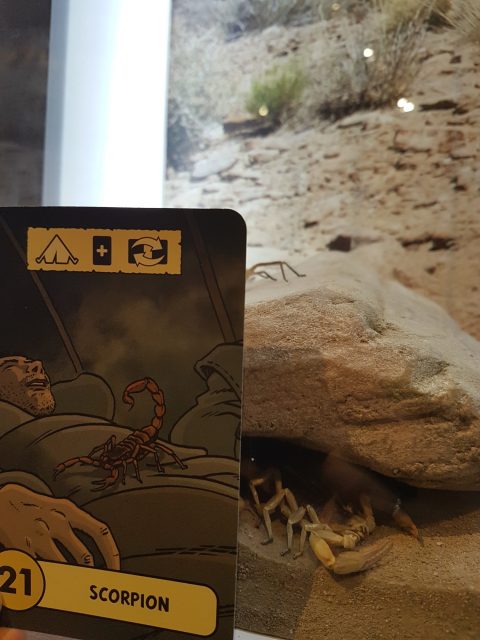
Inspired by explorer Percy Fawcett’s last attempt to find Z, The Lost Expedition takes you through as many days as you can survive, trekking through the Amazon jungle searching for the famed city. I had heard about this game long before getting to try it, as it was lauded as a fantastic solo game and a great co-operative game. (And yes, there is a head to head mode – I’ve not tried it, and I’m not sure I would. Banding together as a group to play your cards right just feels apropos for the expedition.) My first game (2 player) left me so energized that I played it again immediately, delighted with the challenge.
The great thing about The Lost Expedition is that you can sit down and pick it up quickly, and machete-hack your way through multiple games in a row should you wish. The gameplay, symbology and resources are all straightforward, yet you’ll find the decisions of when to play certain cards and how to deal with their effects excruciating. Cards will sometimes provide you with resources (navigation, shelter, food and the like) – or more often, require you to discard those resources to survive (phew) or progress along the path (which is cause for much celebration).
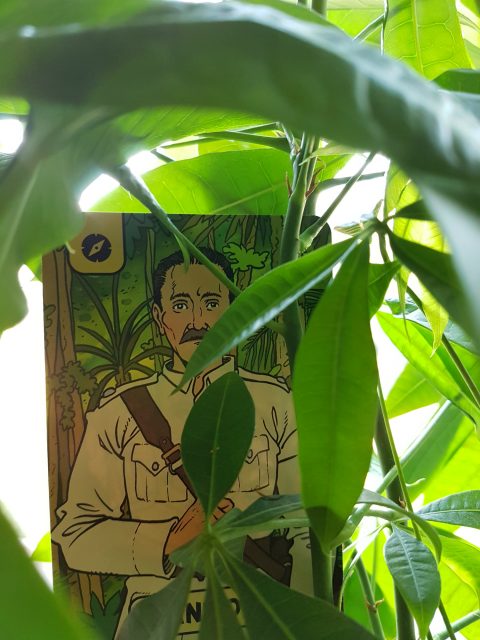
There’s a delicate balance of the cardplay and resource management over the course of the game. Each round consists of two phases – morning and night – and in a co-operative game, players take it in turn to play cards out to a shared tableau in each of these phases, creating a path for the adventurers to forge their way through. In the morning, cards are played one by one and shifted into numerical order, then resolved; however, in the evening, cards are kept in the order they are played. Players aren’t allowed to give away details of what is on the cards in their hand, but need to sort of judge – based on what’s been played what should I play that won’t be too devastating to come back from, and that we have the resources to get through?

It’s terrifically difficult and at the same time, marvelously thematic – I’ve never personally tried trekking through the largest rainforest in the world, but I imagine it’s somewhat of a challenge. The co-operative mode of the game lets players have some control over what events and the like hit the table – however, in the solo mode you’re somewhat at the mercy of random card draws. On the one hand this makes the solo mode even more difficult than the co-operative multiplayer mode, yet on the other hand I enjoy the way that the designer went whole hog on the “you don’t know what’s waiting around that bend” randomness of such an adventure.
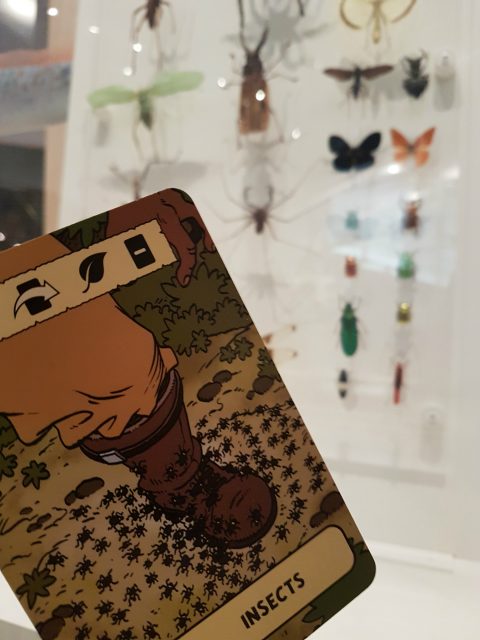
If you’re likely to be playing this more often than not in the co-op mode, you can tinker with the difficulty setting a little bit – easier means a shorter path through the jungle, and hard mode is the longest possible (which you’ll be battling with in the solo mode). I’ve yet to progress even halfway down the path to the glistening, fabled Z in a solo game – but I have made it to Z in a co-operative game (let’s not talk about how few of the team made it..). The randomness of the solo game can be tough, and there are no real ways to mitigate that despite still controlling what is played from your hand. I personally don’t mind this sort of randomness in a game that plays like this, and is relatively short – I enjoy the thematic struggle imbued in the game’s difficulty.
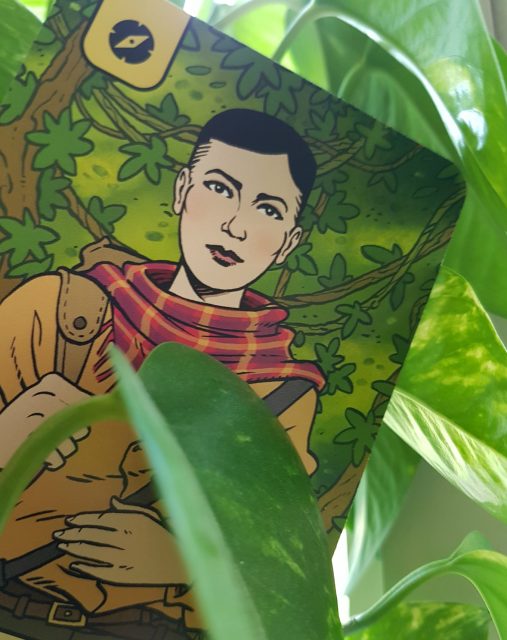
One thing I have yet to mention is that players aren’t just some sort of abstracted “adventurer” – there are actually 6 explorers that you choose from to form a party of 3 to take on your expedition (each with their own expertise to contribute to the journey). This helps you in your decision making as far as who can help with certain card events, but it also adds a lovely flavour to the feel of an expedition in this game. The 6 explorers are based on real people – most would recognize Teddy Roosevelt, but the rest were a nice surprise to me when looking into their backgrounds, as the blurb in the back of the rulebook suggested. I’m particularly interested to find out more about Isabelle Eberhardt, and “real life Indiana Jones” Roy Chapman-Andrews. Not only is it interesting to see this mix of characters, but the choices mean that there’s a fantastic, effortless diversity on show – not just of race and gender, but also age.
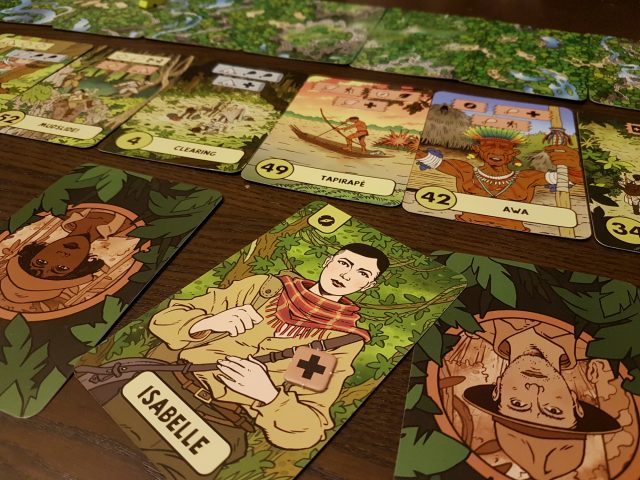
Osprey have been impressing me consistently with the quality and content of the games they are publishing, and I truly think that this is one of their superstar titles. The book-style boxes and the lovely finishes on the box and cards and the robust tokens make it really feel nice on the table. And content aside – this game is gorgeous. There is a rich lushness to the palette of this game that brings the setting to life, and the style of Ewing’s illustrations just seems like mid-1900s comic book perfection as far as theme goes. I’m thrilled that there will be more of this game soon, with a set of 4 expansions being released later this year under the title The Fountain of Youth & Other Adventures. It’ll be great to see what other disasters I can get my intrepid explorers into!
The Lost Expedition is a card game for 1 – 5 players. Published by Osprey Games, it is designed by Peer Sylvester and illustrated by Garen Ewing. Many thanks to Osprey Games for providing a copy of the game to the Daily Worker Placement.
(Thanks also to Nicole’s place of work and her house plants, for providing some weird backgrounds for the photos in this review.)
Comments
No comments yet! Be the first!